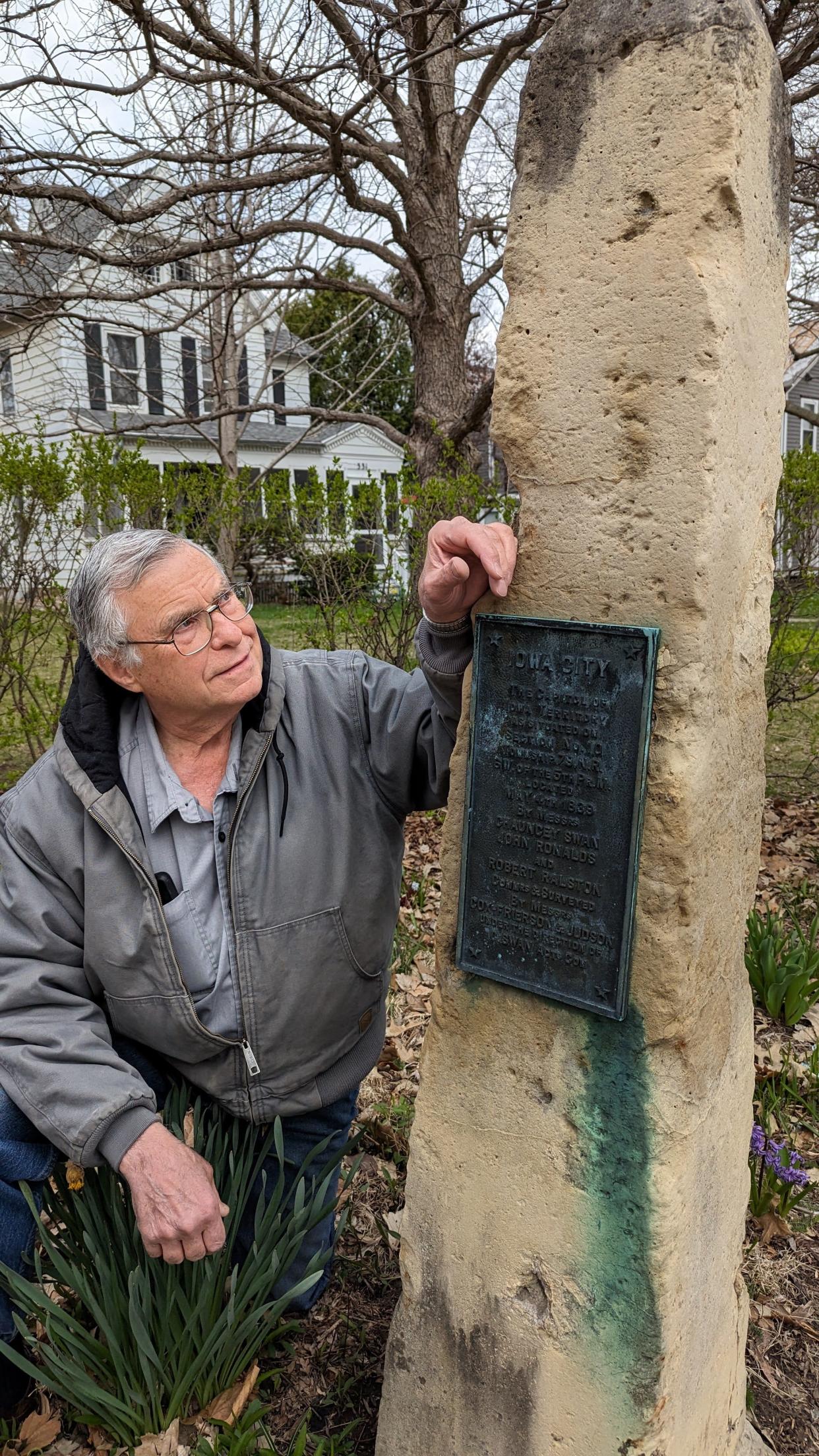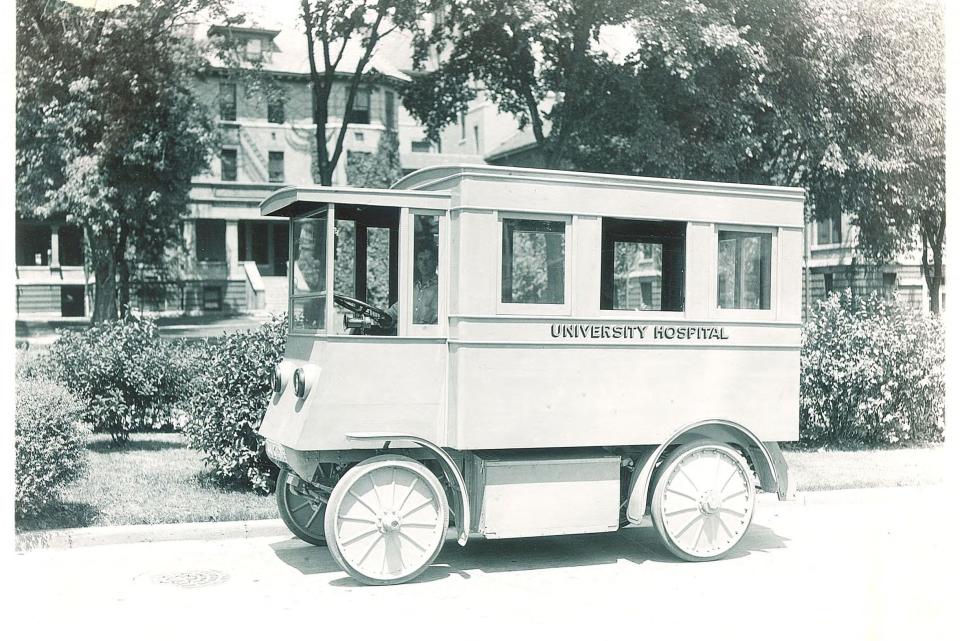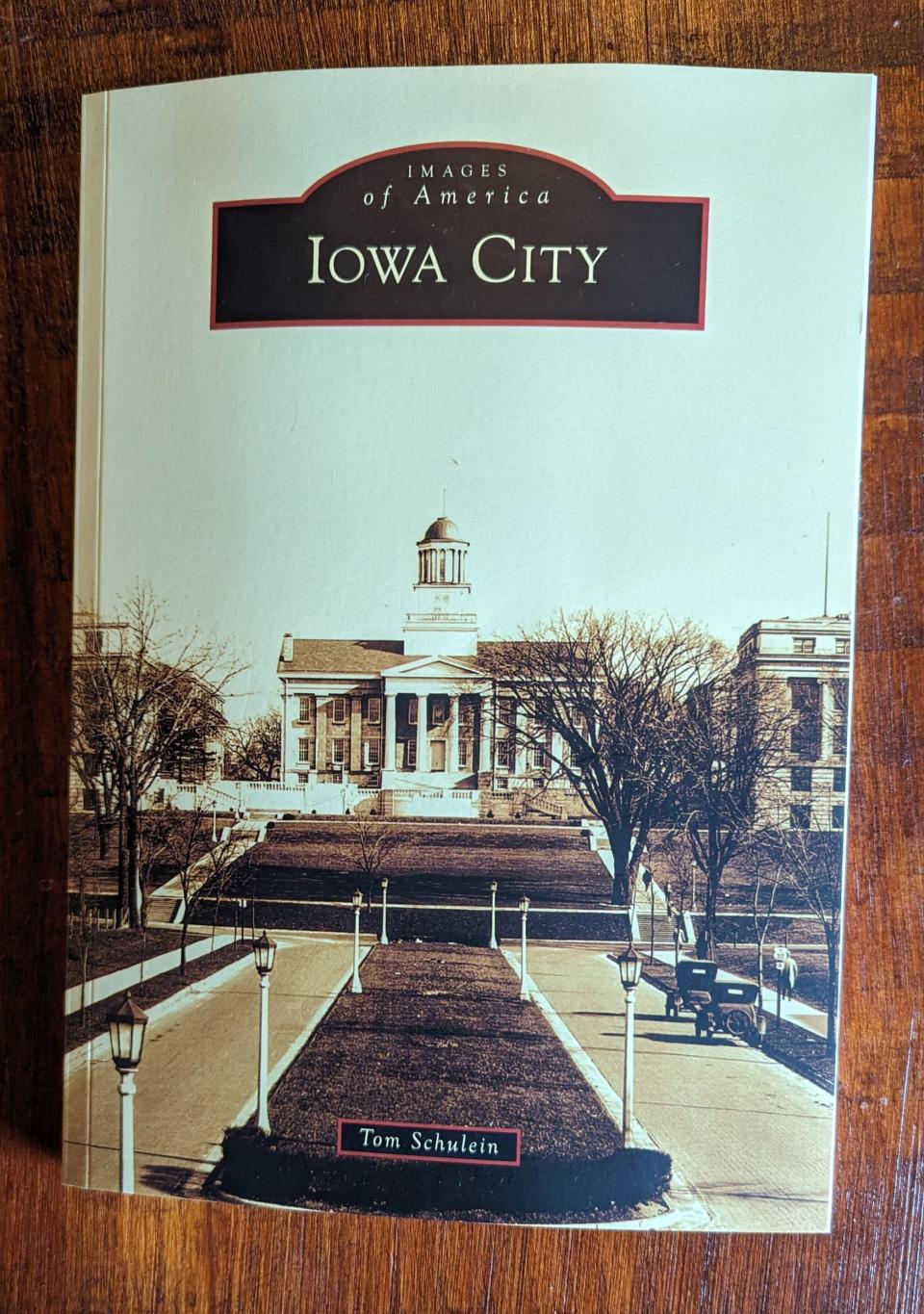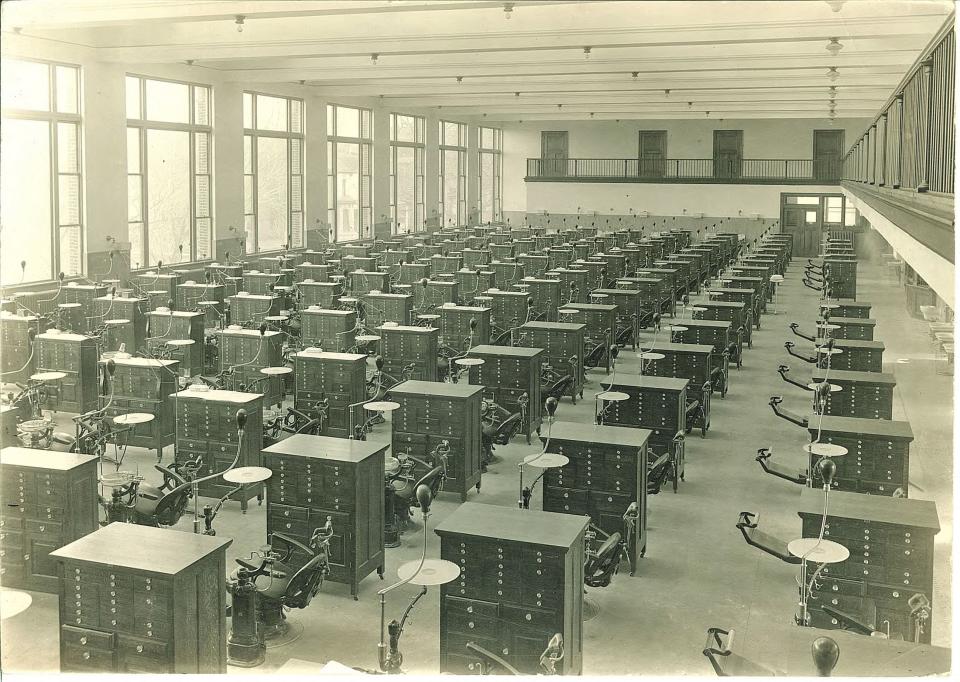185 years & counting: Retiree’s new book reveals Iowa City’s amazing history – image after image

The sweet smile of an elderly Kathryn Bartosky mixing donuts in her kitchen greets you on page 131 of Tom Schulein’s just-released book covering 185 years of Iowa City history.
An immigrant from Bohemia, this woman baked beaucoup batches of pastries for church socials and her neighbors well into her 90s. She was locally famous as the city’s beloved oldest resident when she died in 1954 at age 103.
On page 45, you’ll find a mysterious-looking stone cottage with an elfish “Lord of the Rings” vibe, one of more than 100 built by Howard Moffitt in the early 1900s. Moffitt was also a local legend with his unique designs and penchant for repurposing materials – old railroad rails for support beams and even wooden toilet seats for plaster lath in his houses.
These are two of Schulein’s favorite entries among about 250 captivating historical photos which form his book Images of America: Iowa City, hot off the press this month.
The work joins an astounding 21,566 active titles from Arcadia Publishing, well known for their books covering the history of almost anything and anywhere – from Alcatraz Island and Hoover Dam to Ford’s Theatre and Hilo, Hawaii.
“I’ll get a small royalty,” the author told me, “but I’m not doing it for the money. It’s for the pleasure of promoting Iowa City.”
More: Five major publishers join federal lawsuit against Iowa law that bans books from schools

A deep passion for Iowa City history
You’d be hard-pressed to find anybody around who has a greater fondness and expertise for Iowa City's amazing past than Schulein.
Since retiring from teaching at the UI School of Dentistry, he’s spent his days collecting antique sewing machines and typewriters, plus giving some 160 presentations – most of them about Iowa City’s unique development from a pioneer town to a world-class community.
When another local Arcadia author and historian, Timothy Walch, recommended him for this book, Schulein hesitated because he saw it as “a daunting task.” But armed with access to the Press-Citizen archives and permission from the University of Iowa to use Fred Kent’s historic photo collection, plus his own exhaustive 10 years of study, the Iowa City man forged ahead.
More: Halfloves: Iowa City's sonic trailblazers and their genre-bending journey

Standout images from a long-ago era
Spend an hour or two reading this book—an easy read with historical photos and captions offering insight—and you will come away with a better sense of this amazing community’s vibrant past.
A few of my favorites:
A 1920 photo of a battery-powered University of Iowa Hospital bus in front of the original 1897 hospital, indicating Iowa City had electric vehicles 100 years before they became popular today.
A flock of WWI-era biplanes lined up at a 1929 fly-in at the Iowa City airport.
Esther Winders, University Heights town marshal in the 1950s, a colorful character who packed a pearl-handled pistol and patrolled the streets on a Harley-Davidson.
An early photo showing a massive clinic floor at the School of Dentistry crammed with some 100 student treatment areas, each with its own elaborate antique dental chair and wooden cabinet.
Photos of world-famous locals, such as Grant Wood in his UI studio, James Van Allen, Ignacio Ponseti and George Gallup.
More: Iowa City's 150-year-old Pagliai's Pizza building a step closer to historic landmark status

Iowa City's stint as a commercial and industrial hub
Schulein finds the city’s commercial and industrial past fascinating.
There were three breweries on a single block of Market Street in the late 1800s and there were once four different glove factories in town. Another manufacturer of jewelry and novelties here billed itself as “largest in the U.S.”
An early photo shows a dry goods store founded in 1848. That building has been John’s Grocery since 1948 and was labeled as “the only surviving ‘mom and pop’ in Iowa City.”
“We are a city of many firsts,” Schulein said.
For example, Iowa City’s Mayor Emma Harvat, who served in the 1920s, was not only the city’s first woman mayor but was also said at the time to be the first female mayor of any U.S. city with a population over 10,000.
Lifelong resident Irving Weber wrote more than 800 historical columns for the Press-Citizen, which the Lions Club then published into eight volumes as a fundraiser. He also had a little-known “first” as the University of Iowa’s first All-American swimmer. Likewise, Hawkeye tackle Duke Slater, whose name now graces Slater Hall and the field at Kinnick Stadium, is pictured as the University’s first Black All-American football player.

Also in this category, there’s a 1972 photo of the control room at the city water plant. Schulein said it was considered to be the first fully computerized surface water plant in the world.
“So many interesting things,” the author said. “On page 155 you’ll find the War Art Workshop, where the UI Art Department made posters alerting local residents to a practice ‘blackout’ in November of 1942.”
The list goes on and on.
“It’s kind of like a coffee table book, but in a smaller format,” Schulein said. “It was a labor of love for me, and my joy to make this contribution.”
Find this new book locally at Barnes & Noble, or online through Amazon or the Arcadia Publishing website.
Richard Hakes is a freelance columnist for the Iowa City Press-Citizen.
This article originally appeared on Ames Tribune: Hakes: New book unveils rich Iowa City history in images
